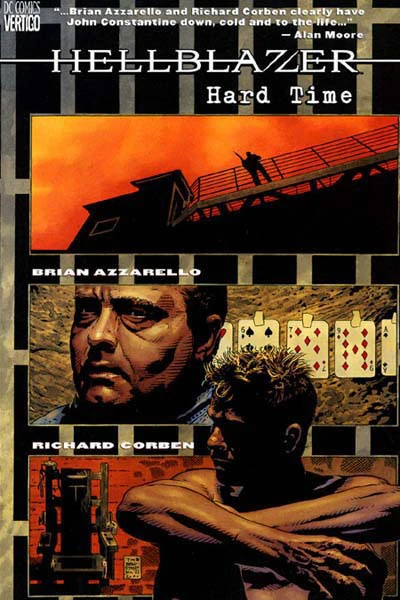[I’m a huge fan of Doc Holliday. I even wrote a short storyabout him that one time. I love Tombstone, The Gunfight at the OK Corral, etc.
This book rubbed me the wrong way back then. If I reread it today, I don’t
think I’d be so harsh on it. Also, I didn’t know James Ellroy’s writing advice
at the time. He said that the author had to know how big each characters’ dicks
are. I learned that a few years ago, and I have considered it in all of my
work, both the serious stuff and the batshit crazy stuff. This is one of the
pieces I wrote for the summer edition of the Leader, Aug 18, 2000 to be
precise.]
Doc Holliday was a true, perhaps the only, American Western
myth that stood out from the rest.
Men like Wyatt Earp, men with extreme violent tendencies in
the name of good, were many on the frontier; you only had to go as far as
Morgan and Virgil, two of his brothers, to find another Wyatt Earp.
There were plenty of baby-faced killers like Billy the Kid,
and just as many gentlemen bank robbers, like Black Bart.
John Henry “Doc” Holliday was strikingly unique. When one
looks at his life, one question rises above all else.
Considering how he was well on his way to becoming a
respected dentist in the South, a job that would get him quite a lot of money
and prospective wives, he somehow became, as Wyatt Earp once said, “the most
skillful gambler and the nerviest, speediest, deadliest man with a six-gun I
ever knew.”
How did he go from one lifestyle to the other? Granted, he
had tuberculosis, but could that have been all?
Paul West tries to answer this question in his novel, OK
(Scribner, $24), giving us a peek into Doc’s mind.
Unfortunately, that is all this book is about. It’s very
slow moving, considering all it contains are Doc’s thoughts on this, that, or
the other thing. Action is only barely present.
While the book shows how many hours West must have
researched Doc’s life (as well as the lives of those around him, including the
Earps and Big Nose Kate, Doc’s lady of the night), one of the most important
aspects of writing a historical novel is conjecture, and West has no idea on
how to do this.
No one can ever know all the facts about an historical
event, so many writers who write about the past have to guess at many things.
These writers use facts to help them guess about certain issues, but West doesn’t
use any evidence whatsoever for his conjectures.
For example, there is no proof that Wyatt Earp had a case of
disguises in his closet for when he wanted to do things he typically wouldn’t
want to be seen doing, like gambling and paying his respects to the ladies of
the night.
While West’s guess at Wyatt’s vanity is pretty well
grounded, the disguise thing is pulled completely out of the air.
On that same note, one can question West’s basis for his
conjecture that Wyatt kept a collection of dildoes. Again, there was no
evidence.
However, when it comes to facts, West is a master. When he
describes the gunfight at the OK Corral, he is very historically accurate,
right down to persons killed and/or wounded at what time, who said what during
the shout out, and who chickened out just after the shooting began.
Another accomplishment of West’s is his ability to disturb
readers.
He opens the novel up with Doc walking over to the spittoon
to drop a hunk of red matter in it from his mouth. Another scene described
later in the book how, at the end of his life, Doc’s lungs were being torn
apart by the air from the Glenwood Springs asylum.
Doc spent his last years ridden with sores before the
tuberculosis spread to his entire body, tearing everything apart “like some
fanatic general wiping out France
to make sure of Paris.”
West’s difficulty selecting a point of view proves a bit
distracting from the story he is trying to retell, though. OK is written in
third person limited, from Doc’s perspective. However, every once in a while,
West will switch to omniscient to try out Mattie’s (Doc’s cousin) mind, or
maybe Wyatt’s.
Even stranger are his sudden switches to first person to
relate his own feelings.
West’s biggest problem, aside from the technical ones, is
his undying desire to talk about male genitalia.
There’s not only the instance where he mentions Wyatt’s
collection of dildos, there’s also moments when he goes out of his way to
describe how whenever Doc ejaculates, it’s tainted red. Even more jarring is
the discussion Doc and Wyatt presumably had on foreskins, especially when it
turns to the two men tying their erections together with a yellow ribbon.
In an historical book like this, these anecdotes are way out
of place and are usually uncalled for.
Thinking about sex is natural, but when it becomes so deeply
rooted in your writing that you’re constantly referring to large cumbersome
objects as erections, it’s time to visit a shrink.
There have been quite a few portrayals of Doc Holliday: Kirk
Douglas in The Gunfight at the OK Corral showed how violent and calculating Doc
was. Val Kilmer in Tombstone
showed how well-spoken, loyal, and vicious Doc had been. Dennis Quaid in Wyatt
Earp excelled in showing how loyal a friend Doc was to Wyatt. All these
portrayals are great, but West’s portrayal is easily the worst.
West didn’t even answer the damn question. OK has its
moments, but they’re not worth it.


